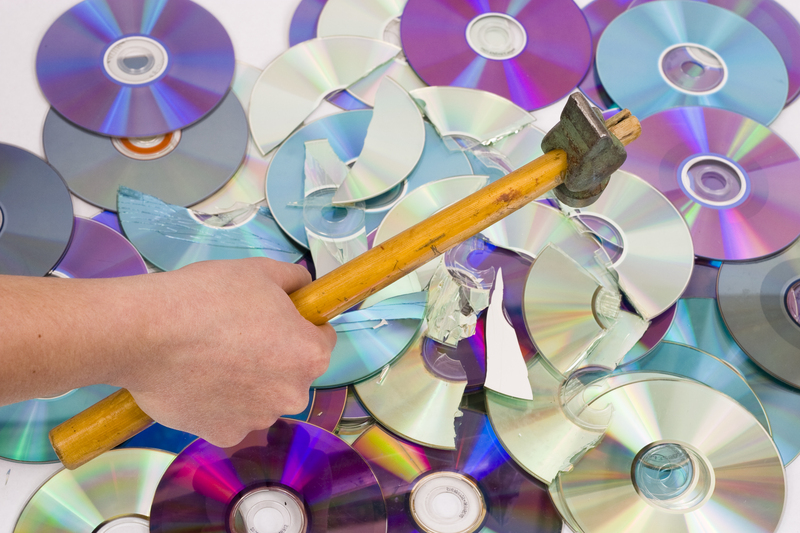Eco-Friendly Solutions for Disposing and Recycling Pots and Pans
Have your old kitchenware seen better days? Perhaps those non-stick pans are scratched or the handles of your pots are loose. Don't let your old cookware end up languishing in a landfill! Learning about eco-friendly ways to dispose of and recycle pots and pans can help you reduce waste and even give new life to materials. In this comprehensive guide, we'll explore the best environmentally responsible options for getting rid of your unwanted cookware.
Why Choose Eco-Friendly Disposal for Kitchenware?
Millions of pots and pans are discarded annually, contributing to landfill waste. The materials in cookware--aluminum, cast iron, stainless steel, copper, and non-stick coatings--can pose environmental hazards if not handled responsibly. Eco-friendly disposal and recycling help:
- Reduce waste in landfills
- Minimize environmental impact of extraction and processing new materials
- Promote sustainable living and circular economy principles
Proper recycling and disposal are key steps in a greener kitchen.

Main Options for Eco-Friendly Disposing and Recycling Pots and Pans
There are many ways to handle old or damaged cookware without sending it to the dump. Let's examine the best solutions for environmentally responsible cookware disposal:
1. Donate Usable Cookware
Before recycling, ask yourself: are your pots and pans still usable? If so, donate them!
- Goodwill, Salvation Army, and local shelters often accept gently used kitchenware.
- Community centers, soup kitchens, or transitional housing projects may also welcome cookware donations.
Make sure items are clean and in usable condition--don't donate broken or rusty cookware.
2. Upcycling and Creative Repurposing
Upcycling transforms your old pots and pans into useful or decorative items:
- Plant pots or garden containers
- Hanging storage for kitchen tools
- Birdbaths or garden art
- Candle holders or lampshades
Get creative and search online for DIY upcycling ideas tailored to your style and needs.
3. Scrap Metal Recycling
The most environmentally-friendly way to dispose of metal pots and pans is through a scrap metal recycling program:
- Most pots and pans are made from stainless steel, aluminum, cast iron, or copper--all recyclable metals.
- Remove non-metal parts, such as handles, lids with glass or plastic, and silicone or rubber fittings.
- Check with your local recycling center or scrap yard for requirements. Some accept mixed materials, while others require metals to be separated.
- Many municipal recycling programs will not accept cookware in curbside bins, so take them to a designated drop-off point.
This option turns your old cookware into new goods, supporting a truly sustainable solution for cookware recycling.
4. Manufacturer Take-Back and Mail-Back Programs
Some kitchenware brands offer recycling or trade-in programs for their own products or any cookware:
- Check with brands like Calphalon, Tefal, and others--visit their websites for mail-back or drop-off details.
- Some companies offer discounts on new products when you trade in your old pots and pans.
- This is especially useful for hard-to-recycle non-stick pans, which often require specialized processing.
Participating in manufacturer take-back programs helps close the loop on cookware recycling.
5. Specialty Recycling Events and E-Waste Days
Many communities hold events for hard-to-recycle household items, sometimes including cookware:
- Check your city or county's Public Works Department for upcoming "waste amnesties" or recycling events.
- Some events accept non-stick pots and pans or cookware with multiple materials, which are not accepted by all scrap yards.
These are excellent opportunities to dispose of your old items responsibly and sustainably.
Understanding Cookware Materials and Their Recycling Challenges
Before dropping your pots or pans at a recycling center, it's helpful to know about cookware materials and recycling limitations:
Aluminum Pots and Pans
- Lightweight and corrosion-resistant
- Widely accepted at most metal recycling centers
- Remove plastic, silicone, non-stick coatings or handles if possible
Stainless Steel Cookware
- Strong, durable, and fully recyclable
- Often have aluminum or copper bases--these metals should be separated for optimal recycling
Cast Iron
- Heavier and easy to recycle
- Valued by scrap metal buyers--can be melted down and turned into new products
Non-Stick Coated Cookware
- Often challenging to recycle due to Teflon or ceramic coatings
- DO NOT place in the regular recycling bin
- Seek out specialty programs or manufacturer take-backs
Copper Pots and Pans
- Very valuable for recycling, as copper is expensive to mine and process
- Remove other materials for pure copper recycling, if possible
Common Mistakes to Avoid When Disposing of Old Cookware
- Throwing cookware with plastic or wood handles into single-stream recycling bins--most are landfill only unless separated
- Leaving food or greasy residue--always clean cookware before recycling
- Assuming all non-stick items are unrecyclable--check for local specialty recyclers or manufacturer programs
What to Do with Heavily Damaged or Beyond-Repair Pots and Pans?
When cookware is too broken, warped, or rusted to be reused or upcycled, scrap metal recycling is your best option:
- Call your local scrap yard to confirm they accept cookware--most do!
- If possible, remove non-metal or multi-material components
- Separate metals (aluminum, stainless steel, copper) if required by the center
If all else fails and there are no local options, contact your city's waste management authority or household hazardous waste collection program for safe disposal recommendations.
Frequently Asked Questions about Eco-Friendly Pots and Pans Disposal
Can Non-Stick Pans Be Recycled?
In most cases, traditional curbside recycling will not accept non-stick pans. The Teflon or ceramic coating contaminates the metal recycling process. Find specialty recycling programs or use a manufacturer's take-back service for these items.
Are Lids and Handles Recyclable?
Most cookware lids are glass or metal--glass may go in glass recycling (if clean and unbroken), while metal can go with scrap. Plastic, wooden, or silicone handles typically have to be discarded in general waste. Always remove as much non-metal material as possible.
What About Ceramic and Glass Cookware?
Unfortunately, most ceramic and glass cookware (Pyrex, CorningWare, etc.) are not recyclable in household recycling because of their composition and heat treatment. Donate if usable; otherwise, take to a landfill or ask about local specialty recycling options.
How Do I Prepare Pots and Pans for Recycling?
- Wash thoroughly to remove any food or greasy residue.
- Detach and separate all non-metal components (plastic, silicone, wood, glass).
- Check with your recycling center or scrap yard for any specific requirements or restrictions.
Is It Worth Upcycling Damaged Cookware?
Absolutely! Upcycling extends the useful life of materials, reduces demand for new goods, and sparks creativity. Even significantly damaged pans can become planters, storage bins, or art pieces.

Eco-Friendly Cookware Choices: Planning for the End of Life
The best way to minimize waste when it comes to your pots and pans is to choose wisely when you buy. Here's how you can plan for eco-friendly disposal from the start:
- Buy high-quality, long-lasting cookware that can be easily repaired or refurbished
- Opt for recyclable materials like stainless steel or cast iron
- Consider brands with take-back or recycling programs
- Avoid pans with intricate multi-material constructions that are hard to separate
By making conscious decisions, you'll reduce waste and environmental impact in the long run.
Conclusion: Building a Sustainable Kitchen with Responsible Cookware Disposal
Disposing of old pots and pans doesn't have to mean hurting the planet. Eco-friendly solutions for recycling and disposing of pots and pans are more accessible than ever. From donating or upcycling to scrap metal recycling centers and manufacturer take-backs, you have options that minimize environmental harm and support sustainable living.
Follow the steps and tips in this guide for responsible cookware disposal--and spread the word to help others make green kitchen choices! Every small effort builds a cleaner, healthier planet for all.
Quick Summary: Best Practices for Green Pots and Pans Disposal
- Donate usable items to charities or shelters
- Upcycle as garden containers, storage, or art
- Recycle metal cookware at scrap yards or recycling centers
- Use manufacturer mail-back programs for non-stick pans
- Prepare cookware by cleaning and separating materials
Let's all do our part to keep unwanted kitchenware out of landfills and give old pots and pans a new, eco-friendly lease on life!